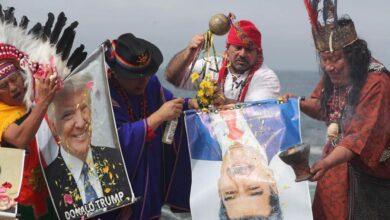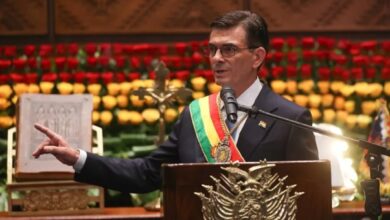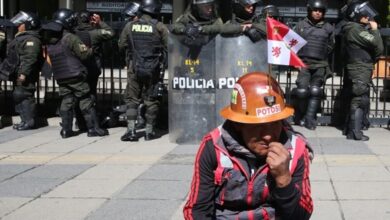Bolivia’s Wilancha: Ancient Ritual, Sacred Llamas, Living Tradition

In the remote Aymara community of Tomarapi, overshadowed by Bolivia’s towering Sajama Peak, local families honor Pachamama through the Wilancha ceremony, a poignant ritual of alpaca and llama sacrifice that merges ancient reverence and modern sustainability in the Bolivian altiplano.
Honoring Pachamama in the Shadow of Sajama
At over 4,300 meters above sea level, Tomarapi lies at the foot of the majestic Nevado Sajama, the tallest mountain in Bolivia at 6,542 meters. Here, amid stark highland landscapes and icy winds, Aymara villagers maintain a livelihood based on raising llamas and alpacas. These camelids, vital for food and wool, also play a central role in one of the region’s most sacred ancestral customs: the Wilancha ceremony.
Performed primarily on August 1—recognized in Bolivia as the Day of Pachamama (Mother Earth)—Wilancha derives its name from the Aymara phrase for “shedding blood.” The ritual shows a deep link between people plus the natural environment. During it the life of a llama or alpaca is given as a sign of respect and gratitude to Pachamama for her gifts. Communities can schedule this event on other days. They coordinate it with harvests, group meetings, or important personal events.
In Tomarapi and two neighboring communities, a total of 12 families share the bofedales, high Andean wetlands that serve as precious grazing land for their herds. The area forms part of Parque Nacional Sajama, Bolivia’s first protected area, established in 1939. These wetlands provide essential water and nutrients, allowing the animals to survive in an otherwise harsh environment of low temperatures and thin air.
When an alpaca is chosen for the Wilancha, great care is taken to ensure it remains calm. In April, workers at the Tomarapi Ecotourism Lodge performed the sacrifice using a young, white alpaca to symbolize purity. “We bandaged its eyes the night before so it would be tranquil,” Javier, a park ranger stationed at Tomarapi, explained to EFE. By the time of the ritual, the animal stood quietly on a small mound facing the colossal Sajama.
Before the sacrifice, participants sprinkled sugar and coca leaves on the alpaca’s back while reciting prayers for abundance and protection. They thought giving sweetness to the animal plus the ground would cause good feelings and show thanks. Javier told EFE, “The animal’s death must happen fast besides happen with deep respect.” The process uses a quick cut to the neck. Some blood flows onto the soil for Pachamama.
From Tradition to Modern Sustainability
The ancient sacrifice ended as the llama or alpaca was burned. But at Tomarapi, the practice changed. The community keeps the body plus eats it for food. This change shows a useful method that agrees with the area’s focus on renewable resources. Food resources here are precious, and every part of the sacrificed animal becomes part of the communal diet.
Javier, the park ranger, noted that roughly 80% of the area’s herds are alpacas, while about 20% are llamas. White-coated camelids are especially prized in commercial markets because their wool easily takes on bold dyes, making it desirable for crafting vibrant textiles. Traditional weavers in the highlands rely on these materials to create everything from clothing and blankets to artisanal souvenirs popular among visitors to the national park.
While Wilancha remains integral to spiritual life, it also highlights the delicate balance Tomarapi’s residents strike between tradition and economic survival. Bolivia’s official numbers show more than two million llamas, over 400,000 alpacas, along with about 300,000 vicuñas within its borders. This totals about 80,000 families in Bolivia who make a living through camelid husbandry. This number shows how important these animals are to the culture and the finances of the country. Beyond providing meat and fiber, camelids also sustain ecosystems: their grazing habits help maintain the bofedales, ensuring that the wetlands remain healthy and biodiverse.
For the Aymara residents, caring for their herds is more than a means to an economic end—it is a demonstration of respect for Pachamama’s gifts. By preserving ancient ceremonies, they acknowledge their dependence on nature, even as they adopt selective modern practices. The Wilancha, then, becomes a living tapestry of faith and pragmatism, uniting past and present around shared reverence for the land.
Bridging Cultures through Food
In April, the Tomarapi community held the Wilancha. Two special people took part: Sean Sherman, an Oglala Lakota Sioux chef from the United States, plus fellow chef Lee Garman. As part of the Indigenous plus Native Cuisines Project, they came. Funding from the U.S. Embassy and the Bolivian restaurant Gustu provided support for that project. Their being there showed a shared learning experience of different cultures. The focus was on finding, besides honoring the food traditions of indigenous people.
Chef Sherman, renowned for his mission to “decolonize” American cuisine by reviving indigenous culinary traditions, witnessed firsthand how camelid rearing underpins local survival in Bolivia’s arid altiplano. “I value the respect shown by these Bolivian highland communities for nature and how they use every resource available at this altitude,” Sherman told EFE. He pointed to the Wilancha as a prime example of a ritual that is simultaneously solemn, spiritual, and grounded in real nutritional needs.
From an international culinary perspective, llama and alpaca meat hold increasing appeal. Both are lean and high in protein, attributes that have attracted gourmet chefs who see them as healthier, more sustainable options. The deep cultural context behind these meats—rooted in centuries of Andean tradition—further enriches the story that top-tier restaurants wish to share with discerning diners.
This mixture of old customs and current cooking has substantial influence on talks everywhere about resource management. As area cultivators change old rituals for current requirements, visiting cooks change community actions into new food, making new options for items grown in the Andes. People globally appreciate both the flavor plus the worth of each serving. This recognition benefits local animals and shows the enduring link of residents to Pachamama.
Also Read: Tiger and Mule Symbolize Panama’s Endless Canal Struggle in New Documentary
Tomarapi’s Wilancha ceremony remains central to belief. The study of living things merges with cultural fulfillment. The spirit reveals the careful connection between tradition and adaptation. It demonstrates how a centuries-old custom develops, despite change. From Sajama’s height, families, visitors along with cooks discover that the sacrifice of one alpaca or llama means more than the deed. It provides a profound reminder about the perpetual responsibility people carry toward the land that sustains them.




